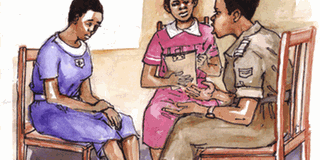Interviewing torture victims

What you need to know:
- Torture cases: Interviewing a victim of torture should be carried out in private and police or other law enforcement officers should never be present in the examination room.
Victims of torture may be interviewed by investigators to record their statements or by health workers to document the forensic evidence of torture and offer them the appropriate treatment. These interviews should be carried out carefully and diligently and not in a hurry. Adequate time should be invested in these interviews.
The broad purpose of these interviews is to establish the facts related to the alleged incidents of torture and identify the perpetrators responsible for it in order to bring them to justice. The medical expert will use the interview (also known as history taking) to correlate the degree of consistency between the examination findings and the specific allegations of torture.
Forensic medical evaluation of victims of alleged torture should be carried out in response to official written requests such as from the courts of law. However, the victims themselves or their legal representatives or even relatives have a right to request a medical evaluation to seek evidence of torture. And the victims have a right to obtain a second opinion or an alternative medical evaluation from medical personnel of their choice.
Getting evidence
Documentation of medical evidence of torture requires specific knowledge by health workers which can be gained through training, conferences and experience. Health workers should take every precaution to ensure that inmates who are victims of torture do not place themselves at risk unnecessarily. Listening during these interviews is more important than asking questions.
Interviewing a victim of torture should be carried out in private and police or other law enforcement officers should never be present in the examination room unless the victim poses a serious risk to the examiner. Even then in such circumstances the security personnel of the health unit should be alerted and be within easy reach of the health worker but out of earshot of the interview.
The interviews should be carried out in an environment that is safe and without surveillance and in which the victims are comfortable. It is for this reason that victims of torture should not be examined in places that they are detained in as the victims may be put in danger by the testimony they give. Victims may be too afraid to volunteer information for fear of reprisals in such environments.
Cases arise when investigators are confronted with a group of inmates with clear signs on their body of whippings, beatings, lacerations burns and other hallmarks of trauma who all refuse to mention their cases out of fear of reprisal. In such situations, it is prudent to organise health inspections of all the inmates in full view in the courtyard. In this way, the visiting medical investigator walking through the ranks and directly observing the very visible signs of torture is able to make a credible report.
The language question
Interpreters may be needed during these interviews especially when there are issues of language barrier. Such interpreters should be people who later cannot be put under pressure to divulge what the inmates said during the interview or who are not at risk themselves. The interpreters should therefore, be as independent as the investigators.
It is important to ask and document the background of the victim which would include the daily life activities, relations with family and friends, social habits and the health status. The victims should be asked why they think they were detained and tortured. Inquiries into political activities, beliefs and opinions are relevant in so far as they help to explain why a person was detained or tortured.
The survivors of torture may be able to recall what happened to them, but often cannot recall exactly where and when each event happened as holding places may be operated by different security groups. Many times the victims are blindfolded during transportation. Disorientation of time and place during torture has been noted to occur frequently among victims.
To be continued




